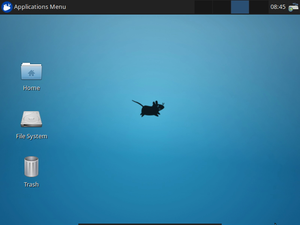Released STXXL 1.4.1
Posted on 2014-10-29 11:17 by Timo Bingmann at Permlink with 0 Comments. Tags: #c++ #university #stxxl
STXXL is an implementation of the C++ standard template library STL for external memory (out-of-core) computations, i.e., STXXL implements containers and algorithms that can process huge volumes of data that only fit on disks. While the compatibility to the STL supports ease of use and compatibility with existing applications, another design priority is high performance.
More history about STXXL can be found in the blog post to 1.4.0. Today, the second release of the new 1.4 branch was published:
What's new in 1.4.1 ?
- Integrated support for kernel based asynchronous I/O on Linux (new file type "
linuxaio"), which exploits Native Command Queuing (NCQ) if available. - Merged
stxxl::unordered_mapbranch, which provides a hash map backed by external memory. - Replaced
struct default_completion_handlerwith aNULLpointer, thus avoiding superfluous new/delete work for each I/O request. - Added
stxxl::external_shared_ptrwhich is a proxy class to allow use of shared_ptr classes inside stxxl containers. - Fixing bugs and warnings on 32-bit systems (yes, they still exist).
- Use
atomic_counted_objectin class file for request reference counting. - Adding support for MinGW-w64 (64-bit) systems with working SJLJ thread implementations.
See the CHANGELOG for further minor changes.







